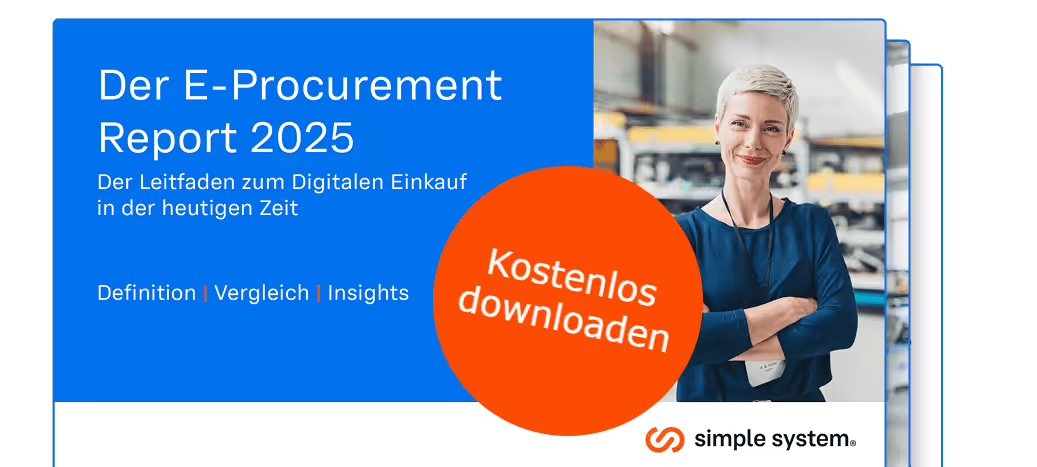Dynamic procurement systems (DBS) are fully electronic, flexible and competitive processes that enable faster procurement and greater profitability. There are challenges in technical integration, training and legal requirements. They offer greater efficiency than traditional tenders.
Procurement system: Basis for efficient procurement of goods | Dynamic procurement systems defined
Procurement is of utmost importance for companies. An effective procurement system strengthens the entire value chain and safeguards competitiveness. The strategic purchase of goods sustainably reduces operating costs and ensures security of supply, thereby making a significant contribution to the company’s success.
What is a procurement system?
Procurement systems are software solutions that help companies manage and optimize their purchasing processes. They automate key aspects of acquisition — such as supplier selection, contract management, order creation, invoicing, and more.
How does a dynamic purchasing system work?

The dynamic Procurement system (DBS) Is a temporary, exclusively fully electronic processfor procuring standard market services. It functions as a type of digital product catalog for public clients, enabling continuous, flexible, and competitive procurement. The system remains open to interested companies throughout its entire duration, allowing them to demonstrate their suitability and join at any time. This gives public clients the opportunity to continually obtain new offers from potential bidders through invitations to tender. In this way, the eligibility criteria are constantly reviewed, and the best possible prices are secured in the interest of the contracting authority.
What are the benefits of a dynamic purchasing system?
Agile Procurement systems offer numerous benefits for both public clients and companies. The key advantages include:
- Ongoing participation and competition – companies can join at any time
- Increased flexibility in terms of duration, validity period, and service description
- Improved efficiency and enhanced security of supply
- Faster processing of individual contracts
- Opportunity to bundle standard market services
- Equal access for new market participants
- Adaptability to market developments
How do dynamic procurement systems differ from traditional tenders?
Dynamic procurement systems and traditional tenders differ in fundamental points:

What are the challenges of implementing dynamic procurement systems?
The integration of advanced procurement systems presents companies and public clients with a wide range of technical and organizational challenges. Key hurdles include:
- Technical integration – Introducing such a system into existing IT networks requires significant adjustments and investments in suitable software solutions that meet the requirements of a fully electronic process.
- Training and acceptance – Employees must be adequately trained to use the system effectively. Resistance to new processes can hinder acceptance and, consequently, successful implementation.
- Data quality and management – Erroneous or incomplete data can disrupt the process. High data quality is essential for effective data management.
- Legal requirements – Legal provisions such as the Public Procurement Ordinance (VgV) and the General Data Protection Regulation (GDPR) must be complied with.
- Data protection – Sensitive data must remain protected. Access controls, encryption, and regular security checks help ensure data security.
- Supplier integration – Technically integrating suppliers into the system can be a challenge, especially for smaller providers.
- Costs and resources – Integration entails high initial investments and ongoing expenses. Personnel costs, in particular, can be substantial at the outset.
Synopsis
Dynamic procurement systems are fundamentally transforming public sector purchasing. They enable continuous adjustments to market changes, thereby fostering fair competition. Despite potential barriers to integration, they offer significant advantages over traditional tendering procedures.
Frequently Asked Questions
How does the VgV affect dynamic procurement systems?
The Public Procurement Ordinance (VgV) sets the legal framework, ensuring transparency, fairness, and competitiveness throughout the procurement process. It establishes clear rules for documentation, traceability, and deadlines. While it promotes competition, it also stipulates that post-award changes are only permitted under specific conditions.
Is the dynamic procurement system operated exclusively online?
Yes. It is operated entirely online to enable rapid communication and efficient administration of public tenders.
How is data security ensured in the procurement system?
Data security is maintained through encryption of confidential information, access controls, strong authentication, and regular security updates. Users are required to take immediate action if any security breaches are suspected.
How can the efficiency of an existing procurement system be measured?
Efficiency can be assessed using factors such as lead times, achieved cost savings, user satisfaction, and the level of process automation.

Einkaufen & sparen
Erfahren Sie, wie es geht, in unserem kostenlosen E-Procurement-Report. Jetzt kostenlos und unverbindlich herunterladen.
Jetzt lesen








